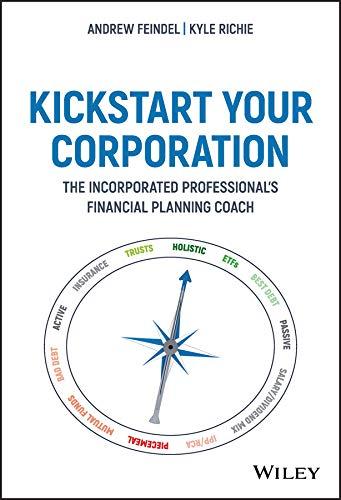Question
Consider a simple life-cycle model, in which individuals live for two periods: they work in the first, saving for the second. Let C 1 denote
Consider a simple life-cycle model, in which individuals live for two periods: they work in the first, saving for the second. Let C1 denote consumption in the first period and C2 in the second;r, the interest rate (r >0), and w, the wage. Then:
C2= (wC1)(1 +r). (1)
Assume savings are used to buy capital goods, which last for one year, so:
K=wC1, (2)
where K denotes capital stock. The gross output of the economy, Q, increases with the capital stock:
Q=F(K), (3)
the interest rate is the marginal product of capital:
1 +r=F(K), (4)
and workers receive what is left over:
wL=F(K)KF(K), (5)
where L is the labor supply, which for convenience, we set equal to 1.
Individuals supply labor inelastically but decide how much to consume by maximizing U(C1, C2), the two-period utility function, subject to equation (1).
a) Put C2 on the vertical axis and C1 on the horizontal. Then plot the set of feasible combinations of C1and C2 using the equation (1) (and the other equations (2) to (5)which are related).
b) For each combination of C1 and C2 there is a value of the marginal rate of substitution(the amount of consumption while working that individuals are willing to trade-off for more consumption in retirement). In equilibrium, the marginal rate of substitution equals the interest rate.
Pick a random point on the feasibility locus and draw a line with a slope equal to 1 +r. Next, draw the indifference curve and the equilibrium point E which will be the point where the line and the indifference curve are tangent.
c) Now, explore how a pay-as-you-go Social Security system changes the equilibrium. Let T be the transfer from the younger generation to the older.
Now C2 = (wTC1)(1 +r) +T. Show graphically how the equilibrium may be affected (draw the new equilibrium E).
d) Explain briefly what the graph in part c) says about the difference between a pay-as-you-go and a fully funded pension plan. In practical terms, would there be a problem in switching from pay-as-you-go to a fully funded system?
Step by Step Solution
There are 3 Steps involved in it
Step: 1

Get Instant Access to Expert-Tailored Solutions
See step-by-step solutions with expert insights and AI powered tools for academic success
Step: 2

Step: 3

Ace Your Homework with AI
Get the answers you need in no time with our AI-driven, step-by-step assistance
Get Started


